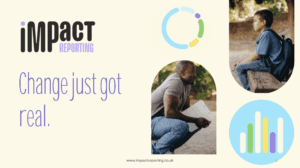Championing the unheard stakeholder voices in impact management
In our ongoing series, we’ve systematically guided you through developing a robust impact management business case. We explored the risks and opportunities that underscore the necessity for businesses to prioritise impact management, allowing you to adapt and thrive amidst rising expectations.
Next, we broke down how to gain buy-in from your financial, operational, and governance decision-makers to propel your impact efforts.
According to the Capitals Coalition, five stakeholder groups are to be considered in impact management. Yet, when we refer to ‘stakeholders’, we’re usually referring to those with purchasing power, and often, a crucial group is overlooked: those directly affected by your efforts.
Beyond securing buy-in from internal decision-makers, you must adopt an impact perspective on stakeholder groups affected by your actions—individuals who lack direct decision-making power to a certain extent.
As well as the stakeholders in charge of the pursestrings, four groups are affected by your impact management decisions:
- Clients, suppliers, and wider supply chain
- Your workforce
- Affected communities
- End users
The reason we don’t consider these as a collective is because they all have different influences on the outcome. There is a split between the first two groups and the latter. Let’s break them down.
Stakeholder groups: Clients, suppliers, wider supply chain, and your workforce
This group includes those working directly or adjacent to your organisation. This might be your suppliers or workers in your supply and value chain.
How you make an impact on this group might be decisions you make around labour rights, staff support, and learning and development. For your external supply chain or supplier/client stakeholders, it might be important to them that they are working with organisations that share their values. Internally, the majority of people who are going to be affected by the decisions made aren’t the decision-makers themselves; it’s the entire team.
When making decisions that impact this group, even though they lack official decision-making power, they still influence the impact decisions you make. They might not have any decision-making power in the boardroom, but in their own way, they still have the right to vote – with their feet.
If staff aren’t happy with the decisions you make, they’ll leave. Clients and suppliers can choose the competition over your business, and suppliers can terminate contacts.
Stakeholder groups: Your affected communities and end users
In contrast, affected and end users, such as those served by charities, lack the luxury of choice.
End users are the people affected by the charities or initiatives you support.
Let’s say you’re working with a homeless charity, for example. The service users are very different to your staff. Prospective new employees can consider multiple job offers and choose from the different elements to see which opportunity matches their needs and decide accordingly. But a homeless service user doesn’t have the same choice. They can’t compare all the available services and asses the options because there aren’t any. It is a case of getting what you’re given, which creates a significant power imbalance.
In the same breath, affected users might be the local community where your impacts take place. These are the communities that you actually affect, so around where your operations are, or even the wider community, that is a step further along from your staff. For example, our Head Office is in Manchester. When we talk about creating jobs or the local initiatives we get involved in, it’s Manchester we impact.
Why champion those without decision-making power?
The answer is simple. When you do, you unlock authentic positive impact.
People who are the most affected by the service or the activity that they’re going to be participating in aren’t generally at the forefront of designing it. But they could be.
Aligning your efforts with their needs ensures a genuine difference. Three types of decisions could and should be influenced by your affected stakeholders:
- Strategic: Aligning impact goals with stakeholder needs and societal goals.
- Tactical: Choosing activities that best achieve impact goals.
- Operational: Making improvements to existing activities.
When you represent these groups accurately, you transform the lip service of “we’re doing a good thing by putting on training/hosting volunteering days/running community groups; therefore, we’ve had a positive impact” into something tangible, measurable, and meaningful.
Representing those without decision-making power
The first step to proper representation is first to acknowledge the importance of affected stakeholders. Shift your mindset from focusing solely on stakeholders with purchasing power to authentically delivering positive social impact.
Making a difference means more than ticking a CSR box. If you want to know what difference to make, ask. Surveys and focus groups are a fantastic place to start.
Championing these individuals enhances your overall business case, presenting compelling opportunities to your purchasing power stakeholders.
Stay informed with our insights or explore Impact Reporting further by scheduling a demo or contacting our team at 0161 532 4752.


